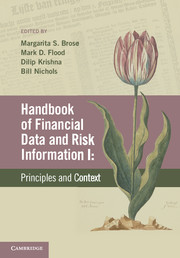PART I - RISK MANAGEMENT CONTEXT FOR FINANCIAL DATA
Summary
The events of 2007–2009 should have dispelled any doubts about the importance of data and information for the management of risks in the financial system. The litany of information problems is by now painfully familiar: banks too big and too inter-connected to fail, structured securitizations too complex to evaluate, shadow banking, inaccurate third-party credit ratings, mis-specified value-at-risk models and six-standard-deviation surprises, robo-signing of legal documents, and on and on.
The consequences of bad information can be enormous. Yet the underlying management issues here would be important even in the absence of a crisis. Many of these challenges are not a one-time fluke, but a basic characteristic of the Information Age. As data proliferate in financial markets and elsewhere, the need to manage those data becomes more urgent. Overall, data volumes are expanding at an exponential rate. Those organizations that successfully tame and harness this data flow will wield a powerful tool. Organizations that fail at this risk being over-whelmed – drowning in data and overmatched by better informed competitors.
The opening section of the Handbook of Financial Data and Risk Information provides a big picture view of the institutional and organizational context within which financial data and risk management occurs. Much of this activity occurs at the level of the individual firm, and a vast body of technical expertise, legal and regulatory constraints, and institutional practice have accumulated to guide it.
- Type
- Chapter
- Information
- Handbook of Financial Data and Risk Information IPrinciples and Context, pp. 3 - 7Publisher: Cambridge University PressPrint publication year: 2014
- 1
- Cited by



